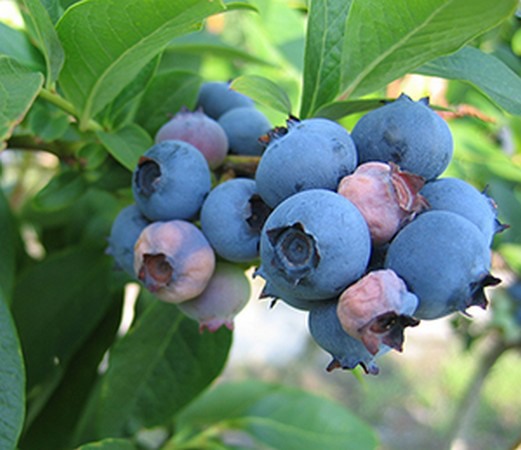Blueberries face a scourge. Like many crops, they are under constant attack by fungal infections, which jeopardize harvests, increase costs and labor, and threaten food security. For blueberries, one deceitful foe is the aptly-named mummy berry disease. Caused by the fungus Monilinia vaccinii-corymbosi, or Mvc, it attacks both wild and cultivated blueberries, with crop losses as high as 80%, according to the American Phytopathological Society.

Mummy berry disease can do a lot of damage in the United States — the world’s largest producer of the fruit. In 2019, U.S. farmers grew more than 670 million pounds of blueberries, with a total crop value topping $900 million, according to the U.S. Department of Agriculture. The blueberry industry is forecast to grow thanks to this humble berry’s reputation as an antioxidant-rich “superfood.”
Mvc employs mimicry and subterfuge in its assault. The fungus triggers two phases of blight on blueberry plants, all while evading host defenses. Blight first degrades young shoots, leaves, and buds. Next, the fungus mimics a pollen tube to colonize mature flowers. Once enthroned, Mvc consumes developing berries from within, transforming them into shriveled, pale, “mummified” fungus-filled shells that drop to the ground, release spores and start the cycle again.
Phase Genomics partnered with a team at North Carolina State University and the University of Florida, using Hi-C proximity ligation technology to sequence and assemble the complete Mvc genome. Recently published, this assembly is already showing us how the fungus achieves duplicity and kneecaps blueberry defenses. For instance, certain Mvc genes could dampen production of salicylate, one of the blueberry plant’s anti-pathogen defenses. Other Mvc genes produce factors to degrade host tissues, so the fungus can set up shop within newly-mummified berries.
The information mined from the Mvc genome could reveal targets for new, specific anti-fungal treatments and other interventions to save blighted berry plants. They’re also siring new questions for mummy berry research. For example, Mvc strains may employ different mating strategies, based on variations in the mating type locus we discovered between the reference isolate and a second strain. In addition, the Mvc genome likely harbors more secrets about its remarkable mimicry, like how it tricks pollinators into thinking that diseased tissues are flowers during the first blighting phase, a deceit that helps spread spores to mature blueberry flowers for the second blight.
“By studying the genetic underpinnings of Mvc’s life cycle and virulence — its development, mating strategies and host adaptations — we gain the kind of fundamental knowledge needed to develop and deploy sustainable disease-management solutions,” said lead author, Dr. Hamid Ashrafi, an assistant professor at North Carolina State University.
Mvc’s close relatives include dozens of species that infect other berries, as well as stone and pome fruits. Only time will tell which of the secrets we’re learning about Mvc apply to these pathogens. But these endeavors illustrate how powerful genomic methods like Hi-C proximity ligation yield the high-quality genomes that pull back the curtain on the deadly theatrics of these pathogens, giving crops a leg up.
For more information:
Phase Genomics
www.phasegenomics.com
